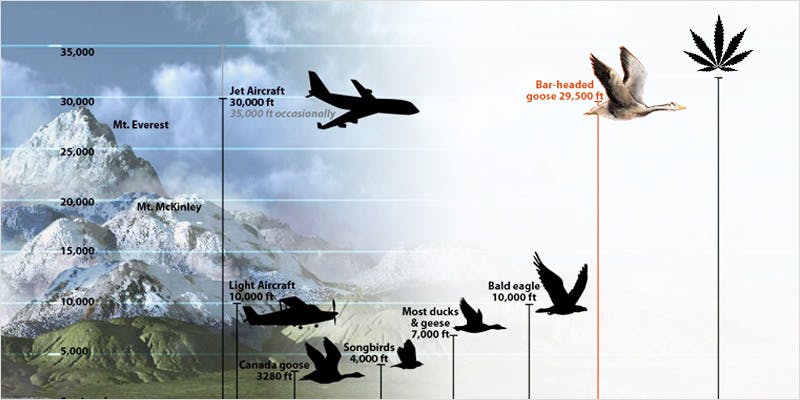
Do You Know How High You Really Are?
We have ‘proof’ content for alcohol and Scoville units for pepper hotness. It is high time we developed a standard unit to know how high we are.
One of the many challenges that cannabis faces is simply that of measurement. Alcohol, tobacco, even hot peppers have a unit of measurement that applies to the potency of a product. Cannabis, on the other hand, has no such regimented measurement. It is high time we develop a standard unit of highness so we know how high we are.
Compared to alcohol
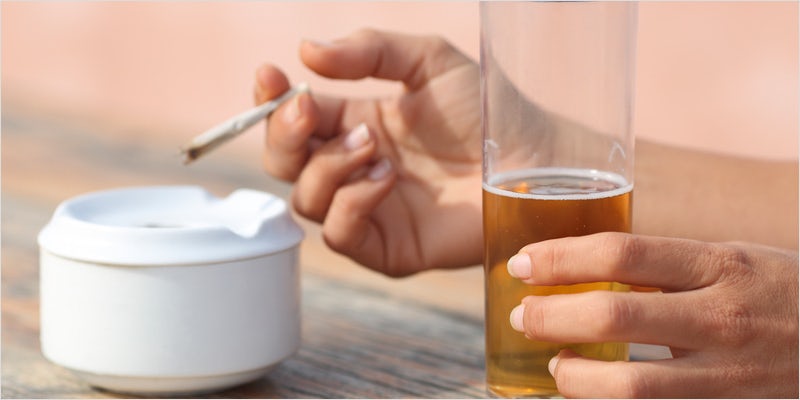
Alcohol has a fairly standard system in place for determining potency and impairment. Every bottle is labeled with % of alcohol by volume. Every roadside test measures blood alcohol content. Any bartender can tell you that you will get the same amount of alcohol from a 12 oz. beer as you would from 5 oz. of wine or a 1.5 oz. shot of 80-proof liquor. It is this ‘proof’ that tells you exactly how much alcohol is inside.
As a result, there is also a standard for impairedness. Most states in the US set the limit for drunken driving at a threshold of .08% Blood Alcohol Content. This makes it a relatively easy process with elementary math to determine what one’s limit should be based on weight.
Why cannabis needs a standard
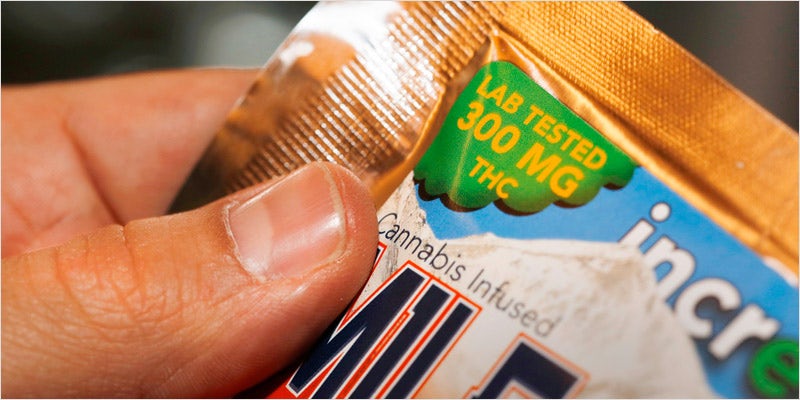
Prohibitionists will caution that the pot of today is far more potent than that of yesteryear. Truth be told, they are correct. Decades of growers selectively breeding the best of the best together inevitably led to a better bud. Yet potency can vary wildly between strains or even identical plants grown under varying conditions.
The problem only becomes more confusing when you take into account the method of ingestion. Cannabis can be vaped, smoked, eaten, applied topically, rectally, or even vaginally.
From one batch to the next, the fluctuation means a certain level of inconsistency. When it comes to treating marijuana as medicine, dosage consistency is the only language that a doctor comprehends. “Use ‘x’ amount for ‘y’ condition, etc.” A standard could go a long way to helping the plant get the acceptance it deserves.
Why consumers benefit as well

George McBride works as a police officer at the UK-based drug policy think tank at the Beckley Foundation. He breaks down the issue to one of simple comparison between products.
Understanding your dose is essential. Recommended units in alcohol is rife with problems, but at least it gives you a means to compare a shot of tequila with a pint of ale. Cannabis users have no way to compare a dab with a joint.
McBride is right. The closest measurement we have is THC content. Most legal states have a current limit of 10mg of THC per serving for edibles. Yet this does not translate easily into other forms, such as raw herb or concentrates. How do we judge serving size then, if every plant is unique? Let alone the fact that dosage affects one in different ways depending on the means of ingestion?
One possibility
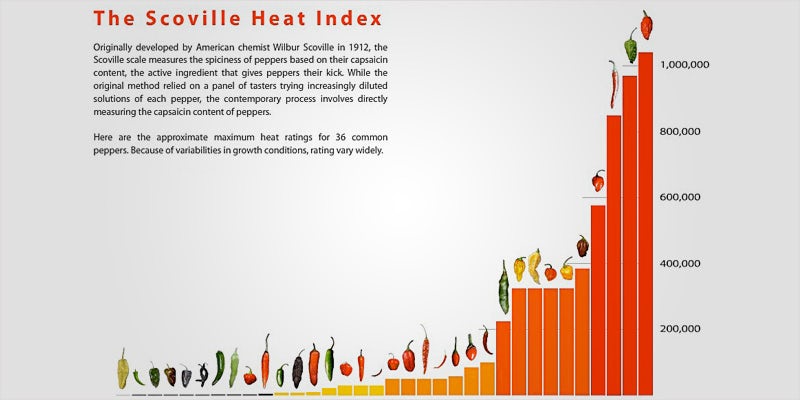
As I mentioned above, there is another plant that has a unique system of measurement. Peppers. The heat from peppers comes from a chemical group called capsinoids or capsaicinoids. You might recognize capsaicin as the primary ingredient in many self-defense sprays, or ‘pepper’ sprays. The unit for determining how hot a pepper will be is the Scoville heat unit.
Rather than defined by high-performance liquid chromatography, this test uses diluted concentrations of dried peppers in an empirical test on human subjects. Concentrations get diluted until a majority of the test panel can no longer detect the heat.
Pros vs cons
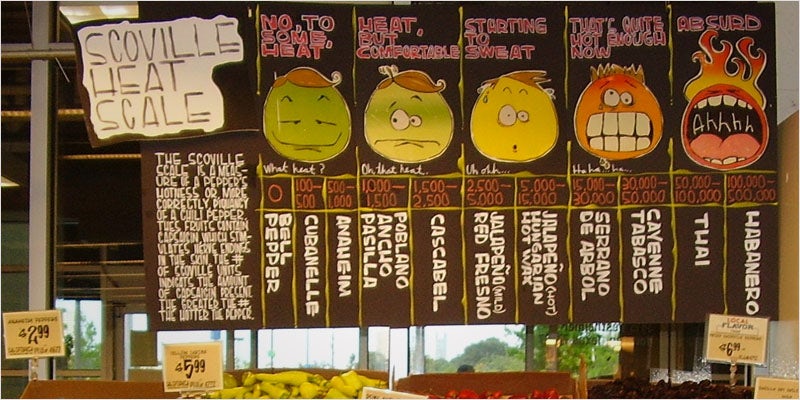
A test of the “high” concentration has its positives and negatives. The negatives consist of the subjectivity of the testing method, which we could mitigate with an inverted test, whereby concentrations go from low to high until a majority of testers can feel the effect. Testing would obviously take longer, as taking multiple doses in a short period of time is the same as one larger dose.
The benefits would be that a window could be established as to the minimum dose for effect versus the maximum dose for function. With this window, applied to “average representations” of each strain, and method, a conversion could be developed.
In conjunction with THC concentration, the “high” units could give us the complete picture we need for how the entourage effect of full extracts or whole plants can manipulate the experienced “high”. Thus, a multi-part classification could be born: Concentration and Effect.
The pieces we have so far
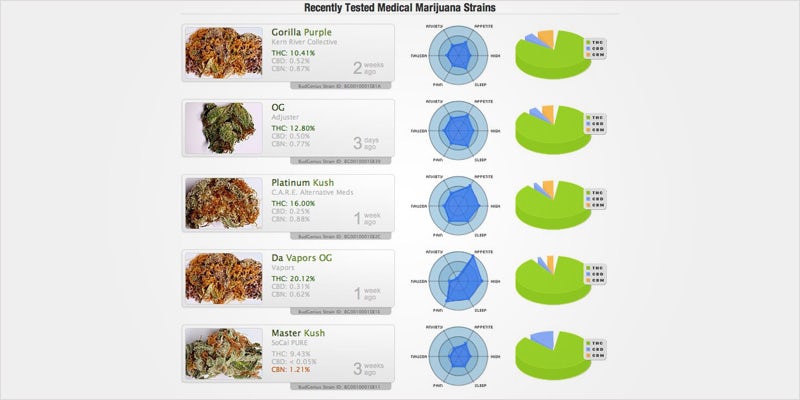
So what do we have so far? Obviously, cannabinoid lab testing gives us a base. The second tier consists of the reviews of strains given by customers. This tier allows us to see what the effects of a moderate dose do. In the chart above, Bud Genius combines these two tiers to customize customer strain recommendations. The third tier would be the Standard High Unit, giving the minimum threshold dosage and maximum functional dosage.
By using a uniform height, weight, and representation of both genders, we can achieve standardized results. Volunteers, anyone?
Different legal states set their legal limit for impaired driving at various levels of THC blood concentration. New breathalyzer machines are giving highway patrol the ability to test quickly and accurately on the scene, but the limits are still subjective. We need a comprehensive test to protect consumers, drivers, and companies.
How much does it take for you to feel too impaired? Would a simple scale of highness make your purchases easier? Share your thoughts on social media or in the comments below.
Herb Recommended Products:
READ MORE










